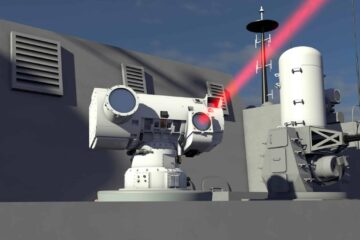The 65,000 tonne carrier was floated in July 2014 and sailed from Rosyth Dockyard for the first time in June 2017. Since then she has crossed the Atlantic to conduct historic trials with F35B Lightning II test fighter jets in the USA and worked up towards her official in-service date of 2020.
“A lot of water has already passed under our keel since we left Rosyth in 2017. Our return here is yet another first for HMS Queen Elizabeth and another important step on her journey as Britain generates a big deck Carrier Strike capability.”
Commanding Officer, Captain Nick Cook-Priest
Having lowered her pole mast to get under the three Bridges, the ship will now have to wait for the right tidal and weather conditions to manoeuvre safely through the lock into Rosyth Dockyard.
Equipped with a specially designed roller-fender system, there will be just one metre clearance each side of the ship, and just over one metre separating the keel from the entrance sill.
She will then be taken through the inner basin, back into the dry dock where she was pieced together, edging past her younger sister, HMS Prince of Wales which is scheduled to leave Rosyth for the first time later this year.
This dry-docking period is a mandatory requirement in accordance with Lloyds Register classification. An inspection will be carried out on her 920 foot-long hull, with any defects being rectified and marine growth removed.
When the docking period is complete HMS Queen Elizabeth will sail to conduct further sea trials and training ahead of deploying again later this year for ‘WESTLANT 19’, where she will embark British F35B Lightning II jets to conduct Operational Testing, following on from last year’s successful Developmental Tests.
She will deploy operationally for the first time in 2021.






